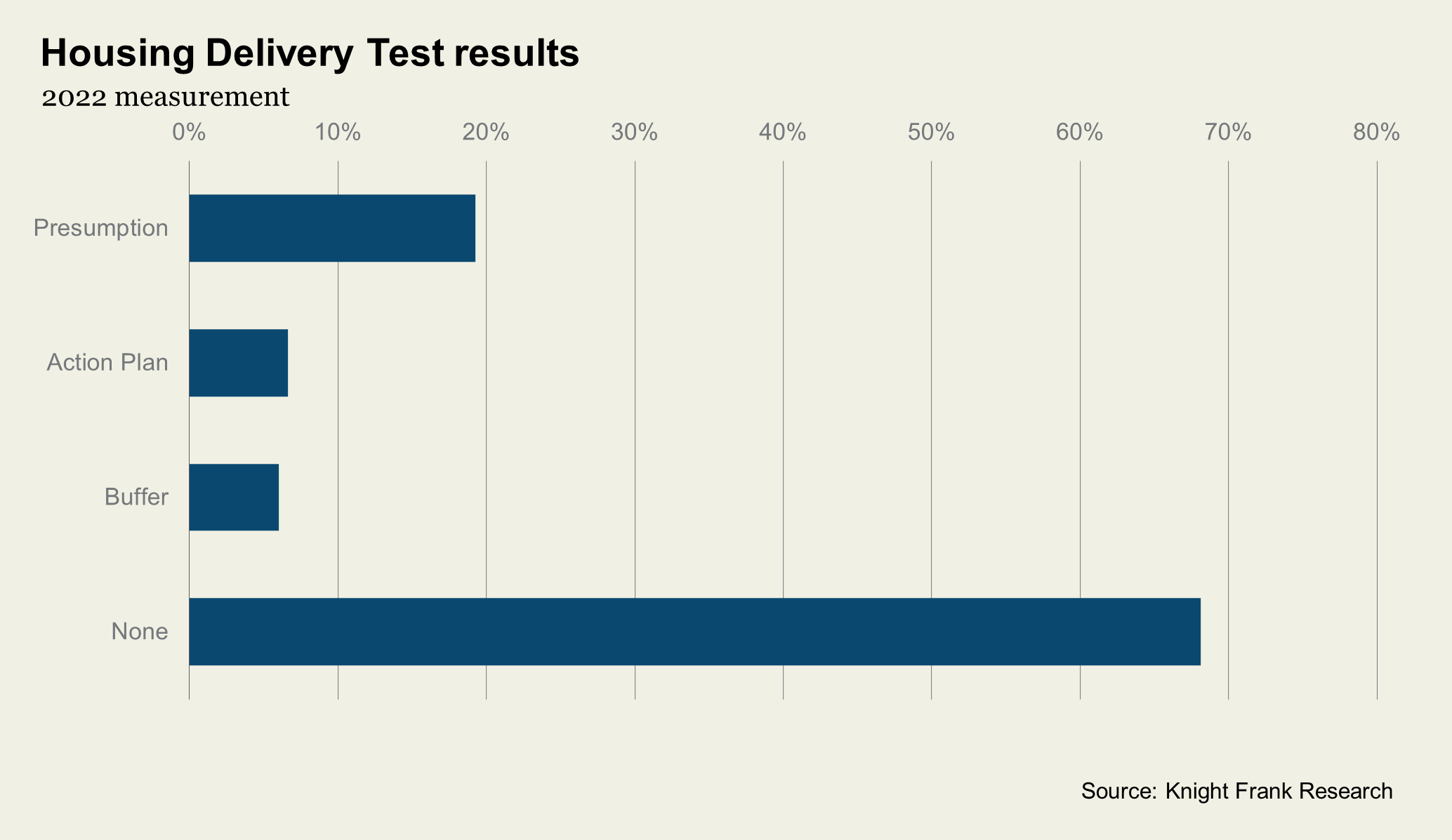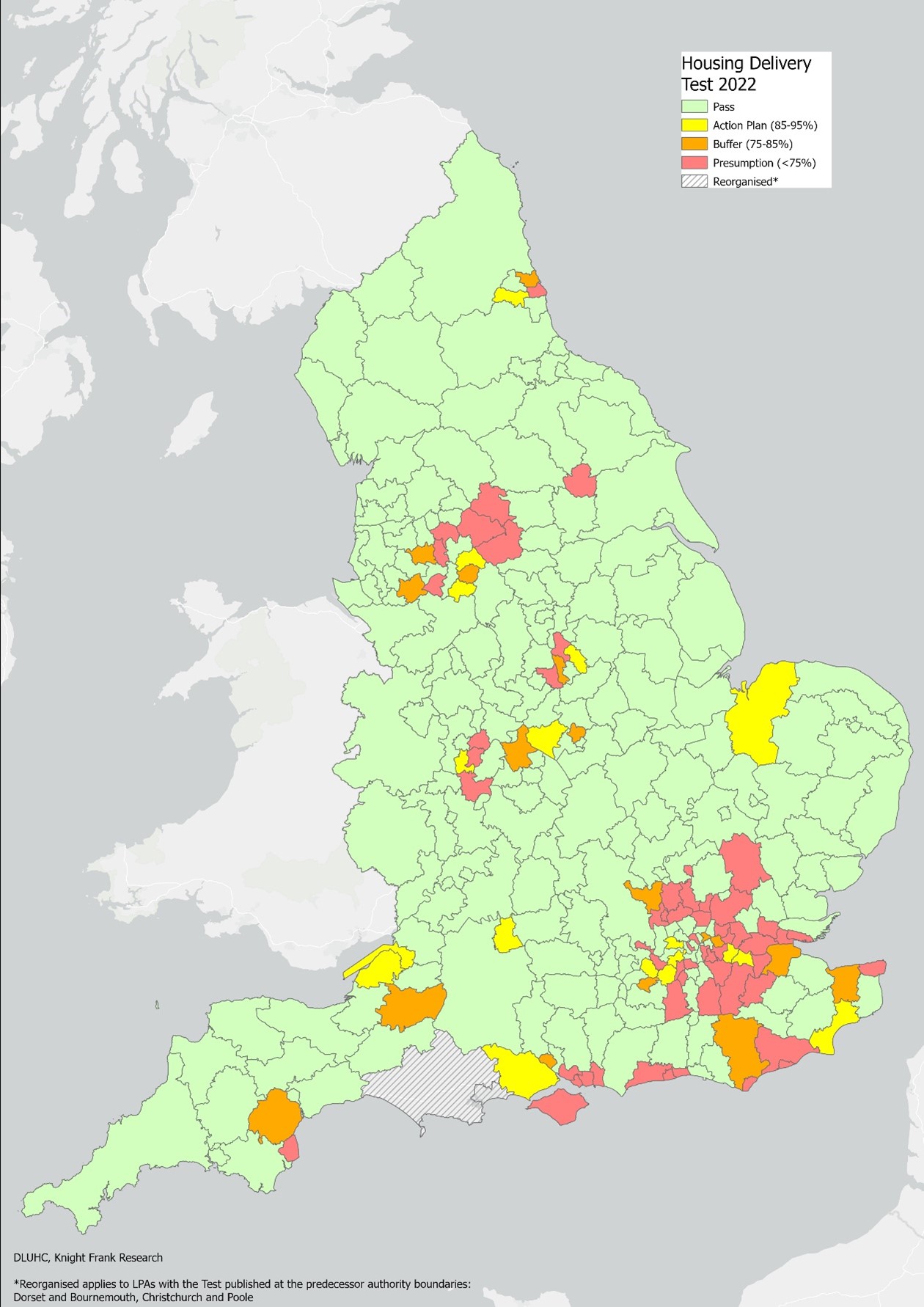Housing Delivery Test 2022: Which areas are falling short?
Nearly a fifth of local planning authorities in England face having less sway over planning decisions
3 minutes to read
Some 61 local planning authorities have delivered less than 75% of their housing requirement, with most located in London, the South East or East of England.
The much-delayed Housing Delivery Test 2022, which measures housing delivery in the three years to March 2022, was published in December.
The intention of the HDT is to encourage local planning authorities to boost housing supply to avoid the threat of losing control of development in their areas.
Typically, the test is published following the year end, with the 2021 test published two years’ ago. But this set of results was held up while the government consulted on how consequences in the 2022 test would work.
In the end, it opted to not proceed with any substantive changes at this time.
The 61 under-performing LPAs now face presumption in favour of sustainable development, a policy which approves any development unless its adverse impacts "significantly and demonstrably" outweigh their benefits.

Elsewhere, 19 LPAs saw delivery fall between 75% and 85% of housing need, therefore requiring the addition of a 20% buffer to their calculation of five-year housing land supply.
However, authorities that do not have to continually demonstrate a five-year housing land supply can disregard this requirement.
Previously, all local planning authorities in England were required to demonstrate a deliverable five-year housing land supply.
But the new National Planning Policy Framework, published in December, states that councils will not need to meet the requirement if their adopted plan is less than five years old and identifies at least a five-year supply of specific, deliverable sites.
An additional 21 LPAs delivered between 85% and 95% of need and will be required to write an action plan outlining how they will increase delivery.
The remaining 68% of local authorities delivered at least 95% of their housing requirement in the three years to March 2022.

Changes mooted
The government had previously proposed a major change to the HDT in a recent consultation on the Levelling-up and Regeneration Bill: reforms to national planning policy. It consulted on introducing an additional permissions-based test that would ‘switch off’ the application of the presumption in favour of sustainable development where an authority can demonstrate sufficient permissions to meet its housing requirement.
It said the intention of the proposal was to apply the test in a way that did not penalise local planning authorities unfairly when slow housing delivery resulted from developer behaviour.
However, it decided to not go ahead with it due to "operability challenges", although it intends to consider ways in which it could be introduced in future.
Regional breakdown
Most LPAs that failed the HDT and face presumption in favour of development are located in London, the South East or East of England. The majority contain some element of green belt coverage, with a third made up of more than 50% green belt. Of the 61 LPAs which failed the 2022 HDT, just under 70% are constrained to some extent by the green belt.
As a result, whilst these LPAs face presumption in favour of development as per the HDT results, in many cases this will be overridden by the NPPF which provides an exemption for sites on green belt land, unless “very special circumstances” exist.
